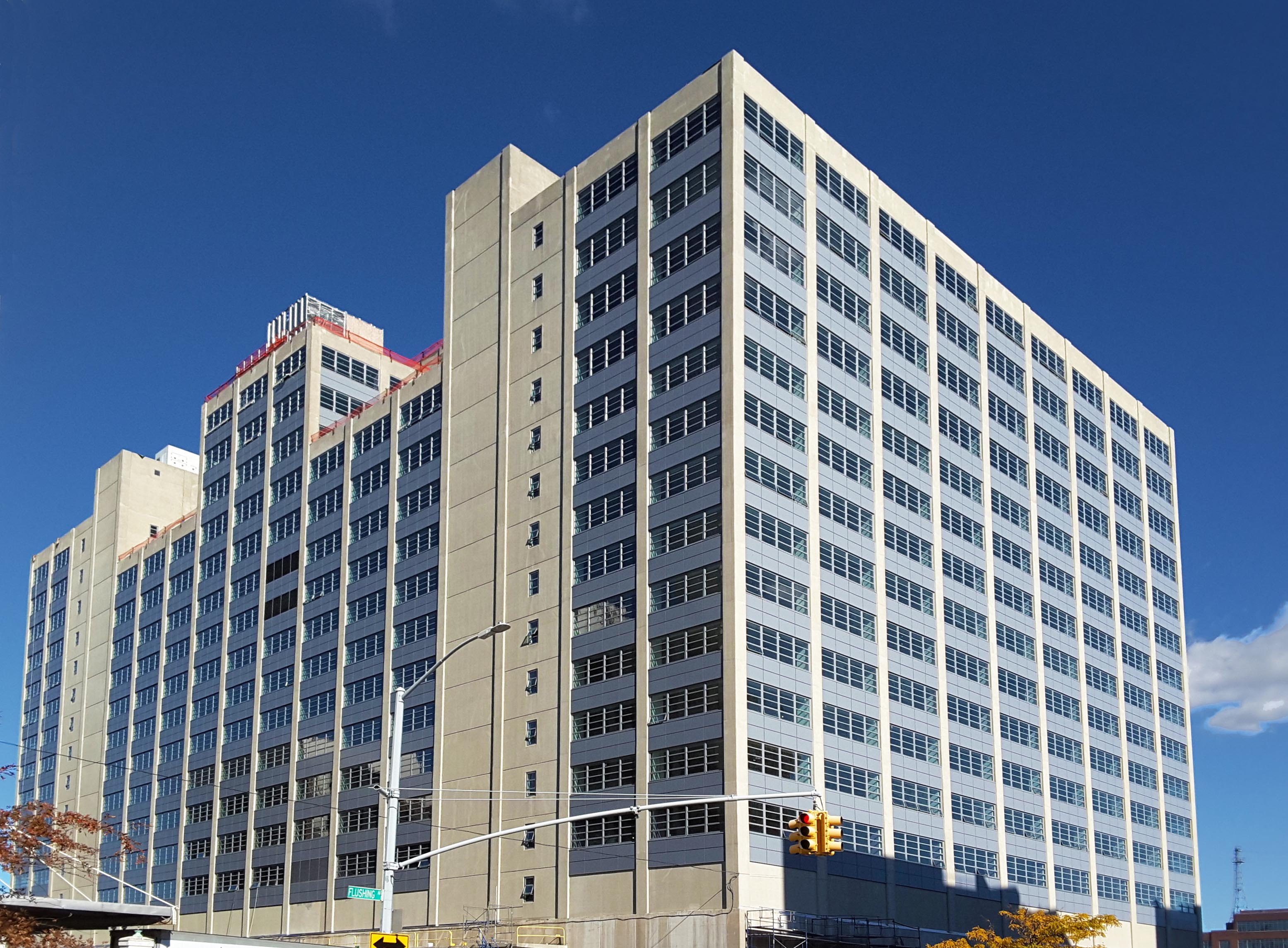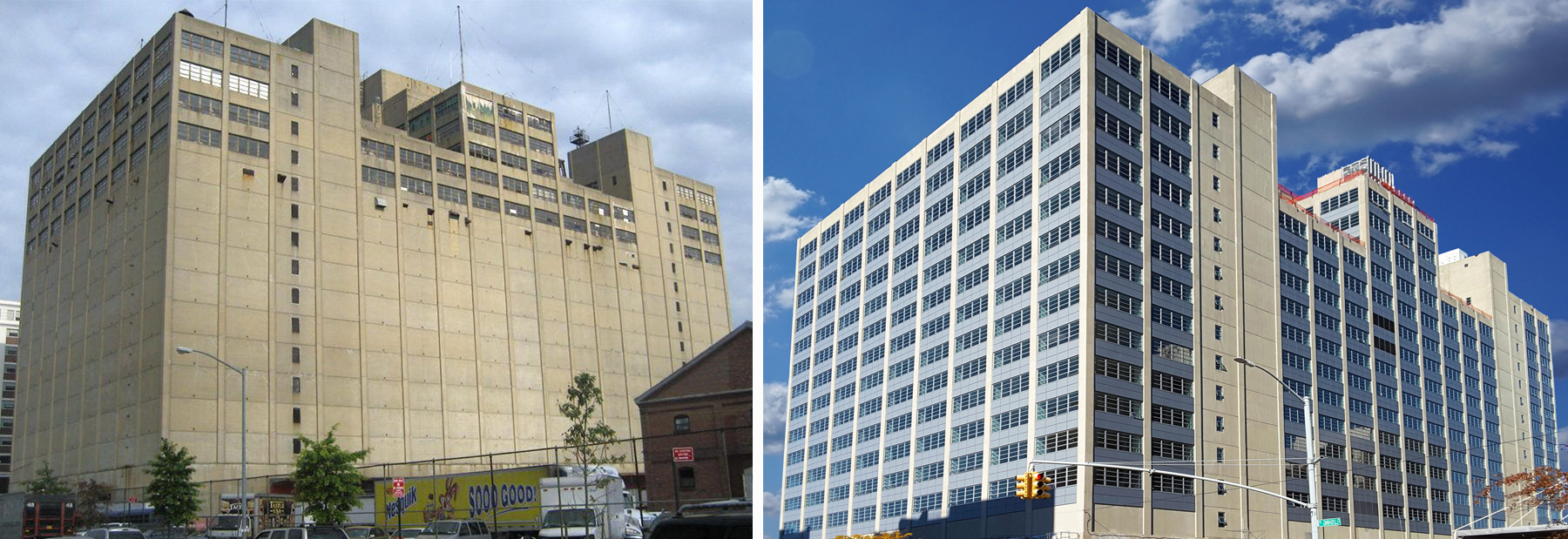Graham Brings Light to a “Concrete Block” in Brooklyn
June 27, 2017

It’s easy to take for granted the contribution windows make to the urban landscape … until you encounter a structure like Building 77 in the Brooklyn Navy Yard.
Opened in 1942, Building 77 stood for decades as, in the words of one website, a “gargantuan 16-story concrete block.” Windowless in 11 of its 16 stories, another website called it “essentially uninhabitable for non-vampiric workers.”

Now, though, the former one million square foot storage facility is a state-of-the-art industrial and manufacturing tech and design hub.
With windows, thanks to Graham Architectural Products.
The building features 2,517 of Graham’s 6700 Series windows – an aluminum window with a profile that replicates historic steel. The job earned National Park Service and Landmarks Preservation Commission approvals.
Why was it windowless? No one knows for sure.
According to one site, “While the official functions of Building 77 over the years have been rather mundane (a 1943 map notes: ‘Administration Bldg and General Storehouse’), its imposing and secretive appearance have inspired many rumors and legends over the years. The offices on the top five floors – which housed the offices of Navy admirals during the war – were said to have been added to allay the fears of the surrounding community that dangerous weapons were being stored or tested inside. We have heard stories about things ranging from bomb testing to the Manhattan Project, though evidence of neither has ever been shown.”
The site quotes one Navy veteran who “recalled working on electronic warfare and radio interference experiments there.”
Its current purpose is far less mysterious. According to the Brooklyn Navy Yard Industrial Park website, “Building 77 represents one of the first opportunities in years where the Yard will have significant space to accommodate the growth of existing businesses or provide a home to new businesses.” The building “will serve as a public gateway to the Yard, and the central gathering point for Yard businesses, employees and their guests.”
Maurice Benor, the rep who sold the job for Graham, said, “Honestly, they weren’t even sure they were going to do the whole building in the beginning. Then they wound up going ahead with the whole project. It was supposed to be a small job, then it turned into a massive job.
“But it’s another example of them taking these old, dilapidated buildings that are rotting away and converting them into usable light manufacturing spaces and events spaces. It’s great to be a part of the re-gentrification of the Navy Yard.”
Enterprise Architectural did the installation.
To find out more about the Graham products used on this project, contact Bruce Croak, Graham’s marketing manager.
